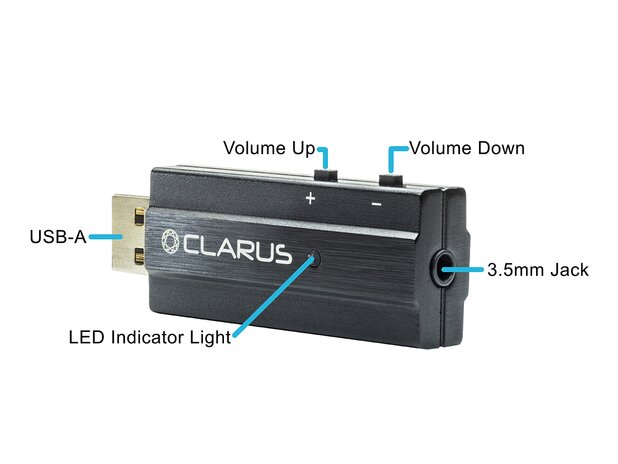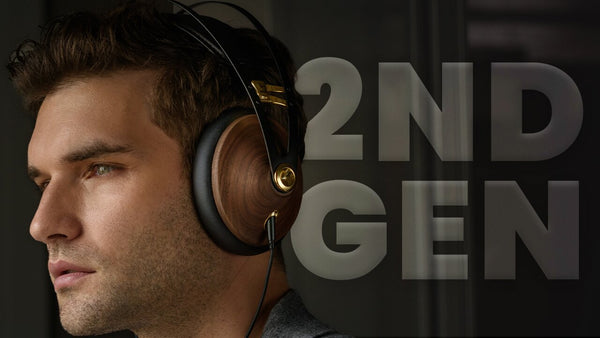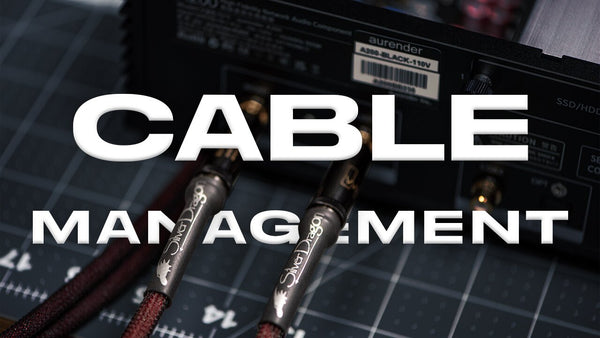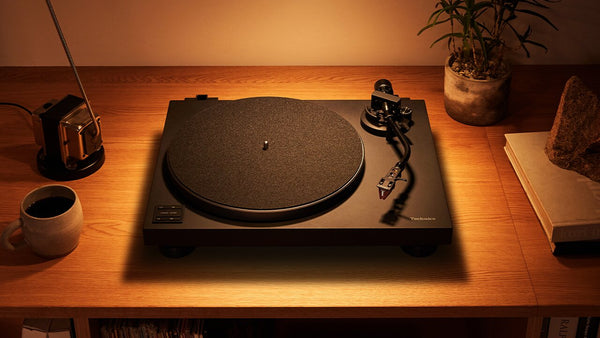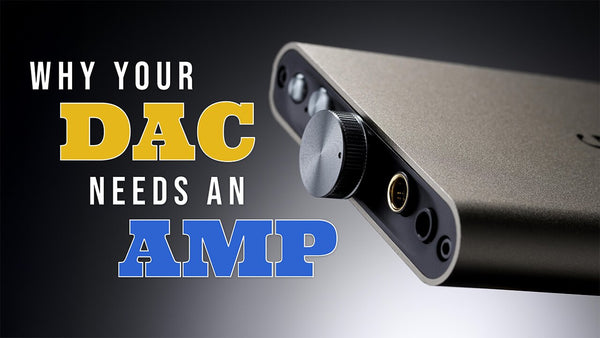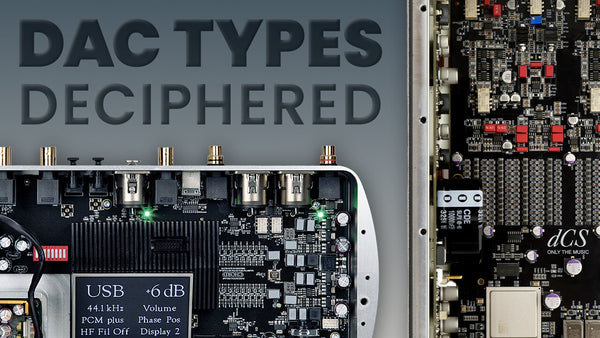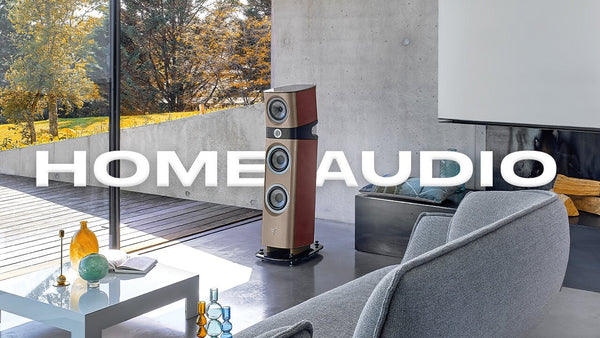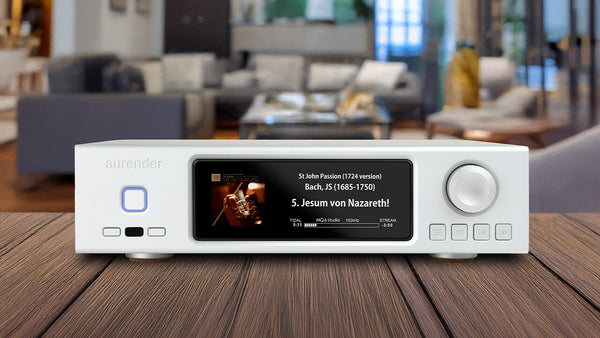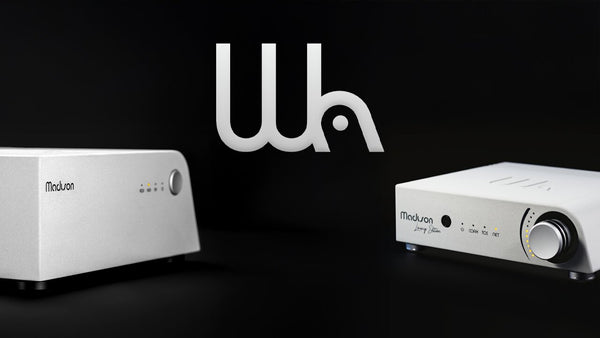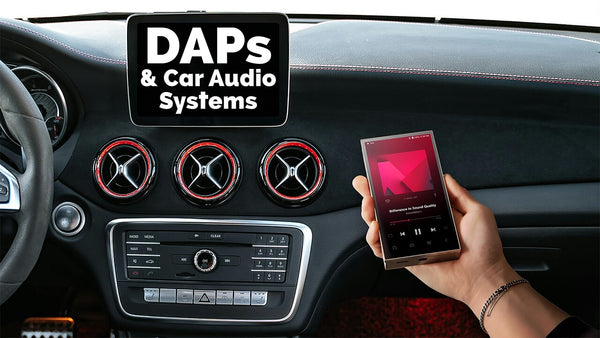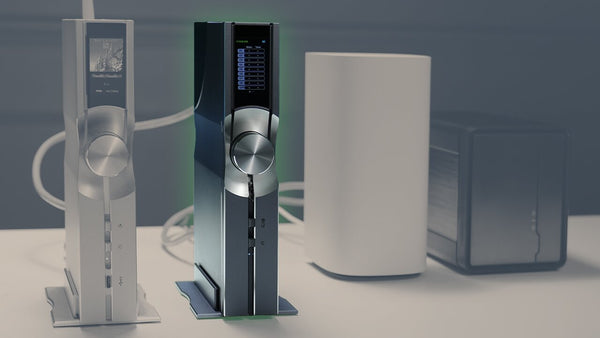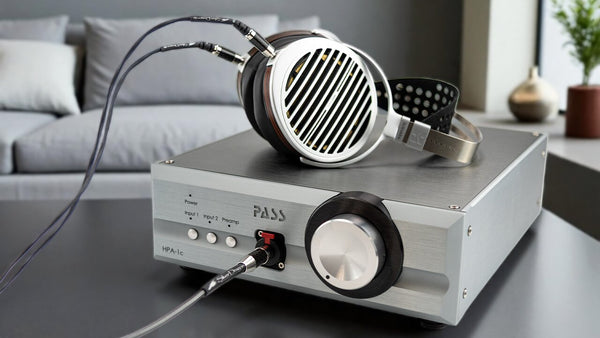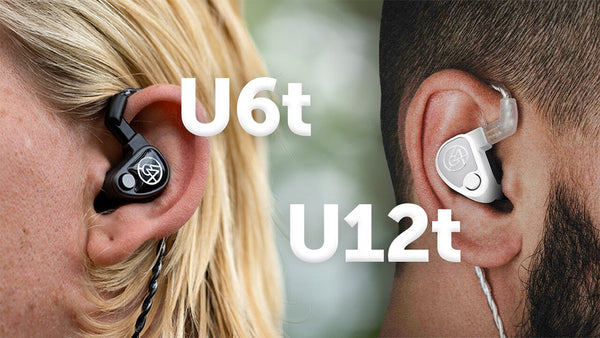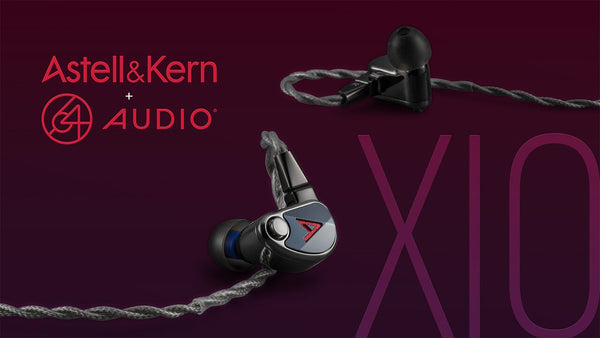Clarus CODA USB DAC Review
Read Time: Approx. 12 min.

High-Fidelity Music in the Palm of Your Hand
Desktop versus portable. There's a place and time for each. Personally, I get WAY more usage out of a portable audio setup since I'm always on the go. I appreciate the sound and functionality of desktop units, but I also like being able to take my gear with me so I always have access to it.
Accessibility. USB DACs are perfect for throwing in your bag with your laptop and hardly taking up any space. And yet, they offer amazing sound quality for your music that sounds completely incomparable to plugging headphones directly into your portable devices. I don't leave home without one, so will the Clarus CODA find a worthy place inside my laptop bag? Let's find out.
Clarus CODA USB Headphone Amplifier DAC Review
Design
Like most USB drives, the CODA is about the size of a large flash drive. I really like the weight of the DAC, since it is constructed out of a block of aluminum. Like a flash drive, the DAC has a matching cover for the USB Type-A connector, creating a uniform-looking rectangle. Aesthetically, it's like a tiny Astell&Kern player, with the sharper angles and metallic finish, and likewise, it feels and looks premium. I really like designs like this over products that require a dongle to connect to your device. I understand dongles are sometimes necessary, but it's also one more thing to lose.
Clarus smartly includes a USB-C dongle in the package however to make it easier for device compatibility. In the same way, the design of the CODA allows the potential to lose the cap as well, which is why I don't like flash drives with type-A caps. However, I can look past all these issues for the sole reason why I've never bought a $300 flash drive: the CODA DAC is a premium product and should be treated as such.
On the opposite side of the Type-A connector you'll find the lone 3.5mm headphone input. The only other features on the chassis itself is the inclusion of 2 push buttons on the side of the DAC. These buttons have multiple functions, the primary one being the volume up and down controls. These buttons also double as toggles for the three digital filters which we'll get more to later.
The included USB-C dongle is a nice braided cable with aluminum-encased connectors. It not only brings additional functionality to the USB DAC, but adds a touch of quality as well. The DAC is also packaged with a nice zippered case, assuring that your device is protected during travel. It's a small device with a small number of accessories, but overall it's a nice presentation and the items are made well enough that you are not questioning the durability and quality of your investment.
Probably my biggest frustration with the product are the buttons on the side of the DAC. The buttons work just fine, but they can rattle when moving the DAC. It's slightly annoying, but nothing that is detrimental to the functioning of the device. It would have helped if the buttons were flush with the chassis to minimize movement. This is more of an engineering/design issue than a quality control issue, so keep that in mind.
There is also an LED light on the device which notifies you of the audio sample rate. More on that in the Features section. Plugging the DAC into my laptop via the Type-A connector was really snug and made a great fit. Sometimes Type-A drives can feel flimsy and loose when sitting in the port, and gladly this is not the case with the CODA. Despite the weight there is absolutely no wiggle room (literally) for this DAC to get disconnected if jostled.
Sound
First things first - the Clarus CODA is equipped with a new legendary ESS Pro Series SABRE DAC. SABRE DACs are known for their great soundstage and clarity. Some might consider the SABRE sound to be analytical to the sense that they are too detailed. I wouldn't go that far - I would classify the SABRE signature sound as more forward-leaning, but still very accessible for those who prefer a warmer or more musical sound. The SABRE is not so detailed in the sense that it sterilizes the music, but rather opens up your music to hear sonic details that are otherwise masked by competing frequencies in a lesser-quality driver. I love a warmer sound signature, but I also really like the SABRE signature. There are also other ways of adding warmth to your music that we'll get to later.
The sound is amazingly clean and clear. Being equipped with a class G headphone amplifier provides your headphones with a bunch of headroom with the 2.0Vrms output. Being class G also makes it incredible power efficient, so it wont quickly drain the battery of your device. This added headroom also allows for some great dynamic performances from your headphones. We always suggest that in the case of planar magnetic drivers, the more power you can throw at them the better they will sound. This certainly stands true about a lot of things too, headphones in particular.
The CODA can produce some great, tight lower frequencies. Due to the more forward or analytical signature, I would say that if you're a bass head it's probably not going to produce the extra bass you desire without some additional help from filters and EQs. But it's accurate enough for the average user, and considering most music lovers are going to be utilizing the CODA as an alternative to the on-board DAC of their computer or mobile device, it's automatically going to be a huge jump in overall quality and fidelity.
Lots of times no matter the quality of the headphones, if the DAC does a poor job converting the data to an analog source, the audio is going to suffer. In other words, you'll know a good DAC when you hear it. SABRE chips do a phenomenal job at expanding the soundstage to provide better imaging and breadth to your music. The difference is like having blinders on; you're only seeing (or in this case hearing) half of the information that is actually there. How does this translate into your music? Well instead of hiding half of the music, a diminished soundstage is like squishing an orchestra closer together. It's going to sound more cluttered and indistinguishable, especially as the dB goes up. The CODA stretches the audio back out to give you a great spread of sound to where you can easily hear all the different instrumentals without having them compete for room.
The Clarus CODA really shines in the mid and high frequencies because of this soundstage. Overall balance is great and the mids never feel claustrophobic and the highs are impactful without sibilance. I'm greatly impressed with how the Clarus CODA tackles pretty much any genre with ease. The DAC provides great amount of energy in rock and metal music - guitars sound immersive and impactful. The CODA adds extension in the low end giving an added perception of bass without bloat. High frequencies are pleasant and have some top-end sizzle. A great sound overall for most listeners.
Features
Volume Control
The CODA supports HID (Human Interface Design) volume control via the side panel buttons; (+) for volume up and (-) for volume down. The CODA's volume control is capable of 64 steps depending on the volume rate setting of the device it is connected to or controlling. There is also zero switching noise while adjusting the volume control. It's a unique design as no other flash-drive sized DAC has volume control built into the chassis, and its a nice addition giving the user more control over their music and audio.
LED Indicator Lights
CODA's LED indicator lights up in different colors to indicate the audio sample rate. The sample rate is how many times per second a piece of music is sampled during the recording. Higher sample rates mean higher quality in the recording. The CODA's LED notifications are set by the following color options:
- Blue - Idle and Standard Definition - <48kHz
- Green - High Definition - >48kHz
- Magenta - Master Quality Authenticated - MQA
Three User Selectable Digital Filters: The CODA lets you select from one of three digital filters. You can hear these features by ear; just select whichever one sounds best to you. To activate filter mode follow these steps:
Enable Filter Programming Mode: Press volume (+) for five seconds; LED starts blinking the color of the current filter. During the programming mode the volume controls will be deactivated. Toggle through the three filters:
- Press the volume (-) button to toggle through the filters
- Blue - Linear Phase Fast Roll-Off
- Green - Minimum Phase Slow Roll-Off
The filter setting is stored and will be loaded the next time you power up your CODA DAC.
Exit Programming Mode: Press the volume (+) button to exit the programming mode. The LED will stop blinking and CODA returns its normal LED display. The volume controls will be active again.


Installation
There are no drivers to download and install for the Clarus CODA DAC. The CODA is compatible with Android, iOS, MacOS, and Windows 7-10. Keep in mind that iOS requires a lightning to USB Camera Adapter.
CODA Setup for Windows: The CODA Is pretty much plug-and-play for Windows computers. Insert the CODA DAC into a USB Type-A, or use the USB-C adapter, port into your computer. If connected to the internet then Windows should automatically recognize and configure the device for audio playback. After configuration, you can check your device settings by going to Control Panel > Hardware and Sound > Sound > Playback (tab). There select the CODA model: CDAC-100. Set as Default and then click OK.
CODA Setup for Apple OS: Insert the CODA DAC into a USB Type-A port, or using the dongle plug into a USB-C port. Open System Preferences and click on the Sound/Output tab. There select the CODA model: CDAC-100. Next select the Sound Effects tab and choose to Play sound effects through: CODA Model: CDAC-100.
CODA Firmware Updates: The CODA's software is upgradable. As technology changes Clarus will provide improvements for your CODA via firmware updates. You can download the Device Manager for free at www.claruscable.com. The CODA Device Manager is simple to use, just install the CODA and click through the menu.
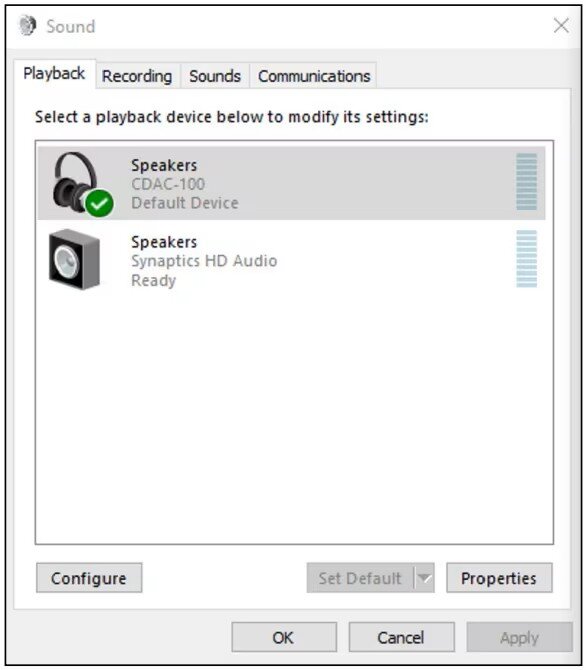

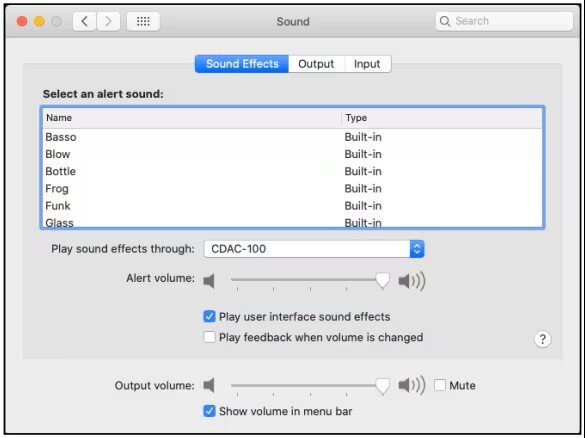
Comparisons
Probably the two most common USB Type-A portable DACs on the market are made by DragonFly and EarMen. The DragonFly has been a very accessible DAC for audiophiles and non-audiophiles alike, and the Cobalt version would be their main comparison in this price point. The Cobalt uses the same form factor as the CODA, with a flash-drive design and also includes a headphone amp and preamp. it can output 2.1Vrms, but thr DragonFly falls short in a few key areas. Firstly, it's only able to play up to 24bit/96kHz, whereas the CODA can do 32bit/384kHz. Also the build quality on the DragonFly series is sorely lacking in my opinion. Made of cheap plastic, sometimes even the PCB rattles inside. There is no comparison to the CODA, which is milled from aluminum and even comes with designated volume buttons on the chassis. The biggest flaw however of the DragonFly is their "digital" sound, which sterilizes the music and sucks the life out of the performance. The Cobalt sounds much better than the cheaper red and black variants, but it's still there and just can't compete with the CODA.


EarMen is a great company that also creates some really great DACs in this class. The EarMen Eagle is another SABRE DAC, and sounds great. However, the EarMen falls short when talking about features. No filters, no controls, it's essentially a passive player in your system. Plug it in and forget about it. The design is sleek, but the CODA still beats the Eagle out for durability and overall construction quality. The Eagle is protected by a glass covering, which might be hard to clean up if it gets scratched. Despite being less than half the cost, it beats out the DragonFly, being able to play similar bit rates and sample rates as the CODA.
Winner: Clarus CODA
Dragon Cables
Due to the more analytical nature of the SABRE DAC signature, we think the Black Dragon USB Cable would be the perfect pairing to add a little more warmth and musicality to the CODA. Our Black Dragon cables utilize single crystal UP-OCC copper construction to provide the best possible bus transmission. In this case, the Black Dragon USB cable is used to transfer digital audio information from your PC or portable device to the Clarus CODA DAC allowing you to enjoy your computer based audio in a home or portable audio system's environment.
Verdict
The Clarus CODA is one of the best portable USB DACs at/under $300 on the market. Its signature SABRE sound is proven and popular, and the construction is durable. What puts the CODA above the competition however are the features and functionality, giving you way more control over your music than a simple plug-and-play device (despite being just as easy to install and use). Don't be fooled by the small size, because it packs a lot of punch and can drive most headphones you throw at it. The CODA is a solid recommendation for those wanting big, clean sound while being small enough to throw in your bag for everyday use.
Featured Products
Related Videos
Clarus CODA USB Headphone Amplifier DAC Review
FAQs on DACs, Ep. 2: Which DAC to Choose?
What is a USB DAC and Why Do You Need One?
Specifications
Technical Features
- Input: USB-A
- Output: 3.5mm (1/8”) Stereo plug
- Operating Systems: Windows 7-10, Apple MacOS, Android, iOS
- DAC: ESS Pro Series SABRE® DAC
- Amplifier: Class G Headphone Amplifier
- Audio Formats: DoP, PCM, MQA
- MQA: Renderer
- Max Resolution: 32-bit (supports 16-bit & 24-bit)
- Max Sample Rate: 384 kHz (supports 44.1, 48, 88.2, 96, 176.4, 192, 352.8. Dop64 & Dop128)
- SNR: 120 dB
- THD+N: -112 dB
- Max Output Voltage: 2.0 Vrms
- Output Impedance: < 1 ohm
- LED Indicators: Blue: ≥ 48 kHz (Standard Definition) Green: > 48kHz (High Definition) Magenta: MQA
- 3 Filters: Linear Phase, Fast-Roll-Off Minimum Phase, Slow Roll-Off Hybrid, Fast Roll-Off
- Volume Control: Supports HID volume Control of Source
- Adapter Cable: Female USB-A to Male USB-C 15cm
- Zipper Case: 4.3” (11mm) X 2.5” (6.5mm) X 1.5” (3.5mm) Inner pocket to hold CODA
- Weight: 24 grams (.8oz) with cap
- Dimension: 2.5” (69mm) x .9” (21mm) X .4” (11mm) with cap
- Chassis: Aluminum





